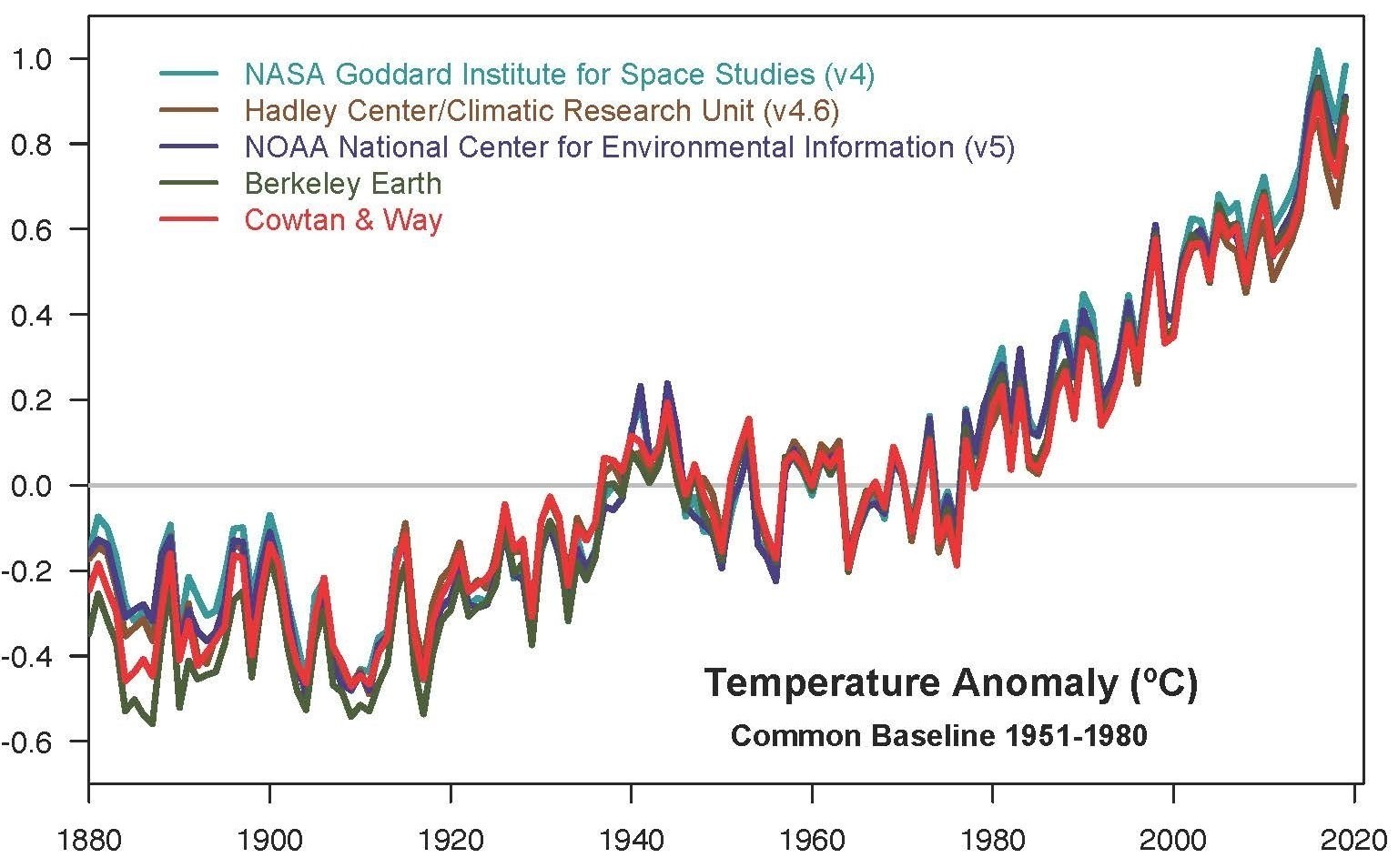Climate Change and Risk Management
 NASA temperature increaseWhere Do Climate Change and Risk Management Meet?
NASA temperature increaseWhere Do Climate Change and Risk Management Meet?
In today’s setting, it is not only a good moral decision to protect the environment, but a risk-conscious decision as well. Climate change is the catalyst for immeasurable risks such as increasing the frequency and severity of natural disasters, destroying resources, and disrupting supply chains.
As a disclaimer, this article discusses climate change based on the evidence that Earth’s climate is warming and weather events are increasing. According to NASA,with references to top associations, 97% or more of scientists agree that climate change exists and is likely due to human activity. We acknowledge not everyone agrees that climate change is affected by humans, but historical data remains concrete.
Regulatory Requirements
As a result of climate change and environmental impact, there has been a significant effort to force companies to reduce their carbon footprint and greenhouse gas emissions. Though many environmental concerns are addressed by federal, state, or local agencies, the United States Environmental Protection Agency (EPA) spearheads this effort with the Code of Federal Regulations (CFR). The CFR is divided into 50 titles that cover broad areas of federal regulation such as energy, banking, agriculture, and public health. It’s not outside the realm of possibility that we can expect more severe regulations or limitations on types of energy consumption and emissions as situations develop. In this scenario, it makes a better case for companies to switch over to more eco-friendly and cost-effective solutions before they are required to.Reputational Risk
In a climate-conscious society, businesses are being held to a higher standard in how they conduct themselves. This isn’t just a concern for when an incident occurs, such as a pipeline leak causing an environmental impact and gaining news coverage. Buyers are now actively researching where their money goes and if it is good to be associated with or supporting that company.
Millennials, for example, now make up the largest portions of the workforce and are very vocal about climate and environmental sustainability. This is reflected in where they choose to work and where they spend their money. According to Gallup, 73% say they’d spend more on sustainable products. This crosses over into B2B dealings as well as millennials in management opt to choose third parties that promote a better brand image. With reputational risk on the line, many companies are promoting their efforts to go green or “carbon negative” by a certain future date.
The Difficult Case
Unfortunately, a major problem with tackling climate risk and updating existing processes is that many companies do not see the cost value in these efforts. The approach is often to do the bare minimum to meet compliance and avoid penalties, but anything more is seen as an unnecessary, extra cost. This is especially true when compared to more pressing risks, such as cybersecurity.
However, risk managers are responsible for looking at not only short-term costs, but considering the long-term risk and financial benefits of making progressive changes. Making alterations towards cleaner or renewable energy is great, but company boards will want to see a detailed explanation to justify changes in how a company operates. This is where you dissect the long-term risk of flooding, wildfires, availability of energy, etc. This is also dependent on industry, as a field like manufacturing or energy is more likely to understand direct impacts over retail or education.
In instances of a board being unwilling to accept these suggestions, you should still push for changes that acknowledge climate change, even though they may not necessarily combat it. For example, if you have coastal facilities prone to flood with rising sea levels, look at the cost of moving facilities further inland or purchasing barriers. Is your location frequented by hurricanes? Consider relocating somewhere with low history of natural events or push for hurricane-proof windows and doors. If these proposed changes can justify the cost, you can minimize future risks and easily gain support.
As an example, the utility company Pacific Gas & Electric (PG&E) filed for bankruptcy protection after it was faulted for the deadliest California wildfire to date. Risk management should have seen the change in climate due to drought, making the area prone to fires, especially after past events. This would have justified reviewing all power lines and transmission towers.
Climate Risk Approach
Approaches generally will fall under three broad categories.
Expand your knowledge base
Organizations may increase efforts to understand and learn more about the climate. This supports a proactive risk management approach by allowing well-informed decisions.
Adapting
Organizations may attempt to increase their capacity to deal with changes in climate by modifying current layouts or processes.
Mitigating
Organizations will attempt to reduce emissions, dependency on non-green energy, and alter processes.
Risk managers and leadership will first have to understand their current approach to climate risk and enumerate risks related to climate change. This will involve checking different scenarios to see what aspects of climate risk could have the biggest potential to impact the organization. Testing this includes seeing if any products or services could become unsustainable in the future, if any physical assets such as facilities or machines would be lost, and if you could lose access to power or resources.
After evaluating the organization’s current stance and possible scenarios, you’ll need to prioritize resources. This will help determine what risks require immediate attention and which can be addressed several years in the future.
Lastly, organizations will establish a process for ensuring the identified high-priority risks are effectively managed.


